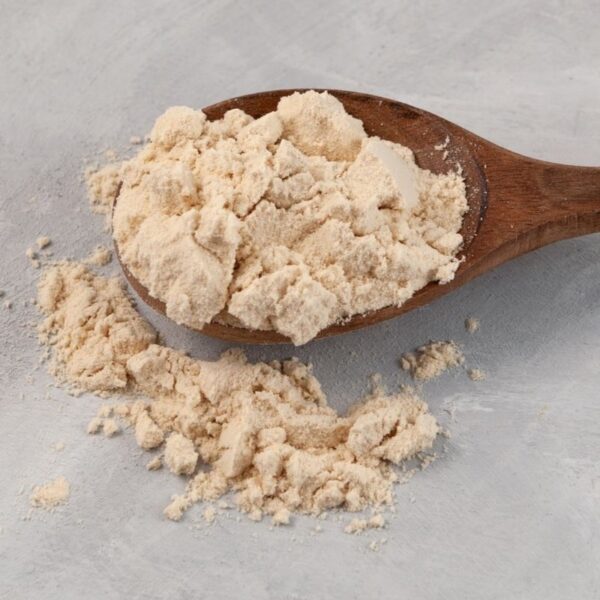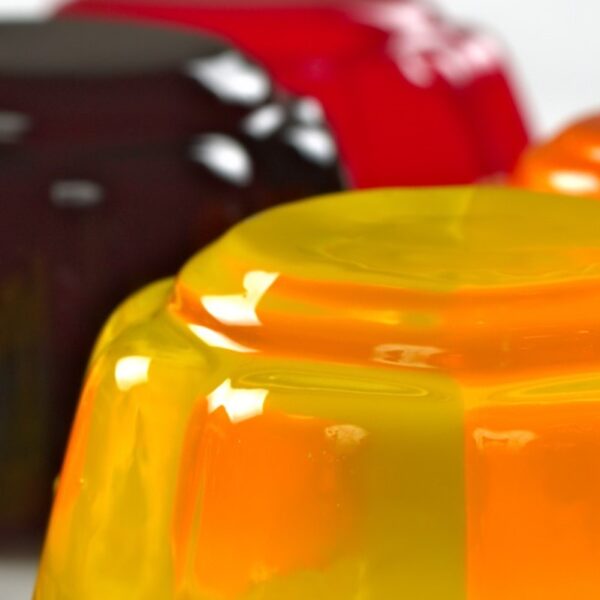Acesulfame Potassium (also known as acesulfame potassium, Ace-K, or Sunett) is commonly used as a sugar substitute due to its intense sweetening power, around 200 times sweeter than sugar. Acesulfame Potassium is one of the most popular artificial sweeteners in the food industry.
This article will explore acesulfame potassium, its applications, and information about formulations. We will also highlight the regulatory information regarding acesulfame potassium.
What is Acesulfame Potassium?
Acesulfame potassium (ACE-K) is an artificial non-nutritive sweetener derived from acetoacetamide and sulfur. ACE-K was discovered in 1967 by German scientists and approved for use in food in the United States in 1988 and is still used worldwide due to its ability to provide high-intensity sweetness without affecting the caloric content of products.

Use of Acesulfame Potassium in Food Products
The primary function of acesulfame potassium in food is as a low-calorie artificial sweetener. It provides intense sweetness to food products and can also help in enhancing the overall flavor profile. Acesulfame potassium is used to partially or fully substitute sugar in food formulations.
Furthermore, acesulfame potassium is highly stable under a range of temperatures and pH levels, which makes it suitable for use in a wide range of food products. It is also heat-stable, making it a useful ingredient in products that require high-temperature processing, such as canned goods and baked goods.
Applications in Food Products
Artificial Sweetener
Acesulfame potassium provides a sweet taste without adding calories. Additionally, because the body does not metabolize acesulfame potassium, it does not affect blood sugar levels or insulin production, making it a suitable option for diabetics. Additionally, Acesulfame K can mask bitter taste coming from other ingredients slightly; however, it has a significant bitter aftertaste.
Acesulfame potassium also finds application in food for special dietary needs as follows.
Low-Calorie Foods
It is an ideal replacement for energy-dense sucrose (table sugar) or any other high-intensity calorific sweeteners (high fructose corn syrups) when the calories are undesirable, but the sweetness is. It is ideal for conditional diets with calorific deficits, especially for weight management.
Diabetic Foods
Acesulfame potassium is diabetes-friendly. The body does not metabolize it, so unlike sugar, it does not affect blood glucose levels. It can be added proportionately to diabetes-friendly foods to replace sucrose.
Keto Friendly Food
Acesulfame potassium is also keto-friendly. It can be used as a sweetener in keto food products to replace other carbohydrates (sucrose, lactose, fructose, maltose, etc.) to achieve the desired sweetness.
Product Examples
Acesulfame potassium retains its sweetness at various temperatures and in many food-processing conditions, allowing it to be used as an ingredient in various food products.
| Type | Examples |
|---|---|
| Bakery | Cake, Cookies |
| Beverages | Soft Drinks, Carbonated Beverages, Juices |
| Functional Foods & Beverages | Protein Shakes, Protein Bars, Electrolyte Drinks |
| Convenience Foods | Instant Beverages, Cereals |
| Dairy | Ice Cream, Yogurts |
| Confectionery | Candies, Chewing Gums, Frozen Desserts, Jams, Jellies |
| Others | Tabletop Sweeteners, Condiments, Toothpaste |
Properties of Acesulfame Potassium
| Molecular Weight | 201.242 |
| Melting Point | 225 °C |
| Density | 1.81 g/cm3 |
| Solubility in Water | 27% (w/w) @ 20 °C |
| Physical Form | Crystalline Powder |
| Color | White to Colorless |
| pH | Neutral in Water |
| Claims (*Product Specific) | *Halal, *Kosher |
Metabolism
The gut wholly absorbs acesulfame potassium into the bloodstream. The kidneys filter it out and rapidly excrete it unchanged in the urine. This process takes place within ~24 hours. Small amounts of acesulfame potassium may be excreted in the breast milk of lactating women.
Typical Formulations
Tabletop Sweetener
This formulation would create a balanced sweetener that is both sweet and stable. Combining acesulfame potassium, aspartame, and sucralose would provide a sweet taste, while maltodextrin and dextrose would help stabilize the sweetener and extend its shelf life.
Here is an example of a tabletop sweetener formulation table with acesulfame potassium along with the % weight of ingredients:
| Ingredient | % Composition |
|---|---|
| Acesulfame Potassium | 15 |
| Aspartame | 20 |
| Sucralose | 25 |
| Maltodextrin | 20 |
| Dextrose | 20 |
Soft Drink
In the above formulation, the control formulation had 345 g sucrose. It was substituted with 1.155 g of aspartame & acesulfame potassium mixture to achieve a similar sweetness.
Here is an example of an acidified cola-flavored beverage (soft drink) formulation table with acesulfame potassium along with the % weight of ingredients:
| Ingredient | Composition |
|---|---|
| Aspartame | 0.810 g |
| Acesulfame Potassium | 0.345 g |
| Phosphoric Acid | 0.700 g |
| Citric Acid | 0.125 g |
| Caffeine | 0.400 g |
| Caramel Color | 2.200 g |
| Cola Flavor | 1.950 g |
| Water | 493.470 ml |
Sesame Bar
You can replace sugar in sesame bars using polydextrose, acesulfame potassium & mannitol.
Here is an example of a sesame bar formulation table with acesulfame potassium along with the % weight of ingredients:
| Ingredient | Composition |
|---|---|
| Polydextrose | 25 g |
| Mannitol | 10 g |
| Acesulfame Potassium | 0.035 g |
| Roasted White Sesame | 31.5 g |
| Dried Amla Powder | 3.5 g |
Acesulfame Potassium Formulation Considerations
Stability
| Attribute | Stability |
|---|---|
| Heat | Stable up to 250 °C |
| Light | Stable |
| Oxidative | Stable |
| pH | >3.0 |
Crystallization Stability
Acesulfame potassium tends to crystallize. Crystallization is used in the purification of acesulfame potassium. The solubility of acesulfame potassium goes up to 50% at 80 °C, through which you may obtain crystals of >99% purity. However, having this high concentration of acesulfame potassium in food products is implausible as it is ~200 times sweeter than sucrose. Hence, the crystallization of acesulfame will have no significant effects on the physicochemical properties of food products.
Temperature Stability
Acesulfame potassium is stable in varied temperature conditions. It has a high tolerance to heat. It helps keep the texture of baked goods stable and retains sweetness even when cooked at higher temperatures <250 °C. It is effective as a sweetener, even in frozen foods. Thus, acesulfame potassium is a versatile sweetener manufactured in products with extreme processing conditions.
Carcinogenicity
Acesulfame potassium is noncariogenic. It is also used in toothpaste to provide sweetness to the formulation. It can be used in food products (like gums, candies, chocolates, etc.) or oral hygiene products for kids.
Comparison with Sucrose – Dosage
Acesulfame potassium is ~200 times sweeter than sucrose (table sugar). When substituting with sucrose in a formulation, tiny amounts match the sweetness (i.e., 0.005 g/ g of sugar).
Comparison with Sucrose – Sensory Attributes
Acesulfame potassium binds to the same receptors as sucrose on the tongue and provides sweetness when consumed. When consumed, it quickly provides a sweet taste. It can provide a similar taste profile to sucrose at lower concentrations. However, it gives a significant bitter aftertaste which is very apparent when used at higher concentrations. Unlike other artificial sweeteners, it has few metallic off-flavors but these tastes don’t linger on the palate. It is often combined with aspartame and sucralose.
Comparison with Sucrose – Nutritional Properties
Because acesulfame potassium is a non-nutritive sweetener, it does not give any calories when consumed. Sugar, on the other hand, provides 4 Cal/g when consumed. Hence, for a food /beverage with 600 Cal/ serving, out of which added sugar accounts for 200 Calories, substituting sugar with acesulfame potassium can help to reduce the total calories by 33%.
Comparison with Sucrose – Response to Insulin
Sucrose (table sugar) causes a spike in blood sugar and insulin secretion when consumed. Acesulfame potassium is reported to show no metabolic effect in terms of calories or spike in blood sugar. However, a study on rats reported that the sweetener could induce a cephalic phase of insulin secretion. To conclude this phenomenon, a long-term study of human beings is needed.
Comparison with Sucrose – Functional Properties
Acesulfame potassium can replace sugar in the formulation, given its sweetness. However, sugar plays many other roles in a formulation, making its total substitution difficult, and may require a few additional ingredients to achieve similar results.
Comparison with Sucrose – Preservative
Sugar acts as a preservative in food products owing to its higher concentration and reducing the overall water activity of the system. Substituting sugar with only high-intensity artificial sweeteners will reduce the solute concentration and increase the water activity of the food product.
Comparison with Sucrose – Bulk
Sugar acts as a cheap and widely used bulking agent in food formulations. Acesulfame potassium is required in significantly fewer quantities to provide the same sweetness as sucrose (0.005 g/ g sugar). At this dosage, acesulfame potassium cannot provide bulk to the formulation.
Comparison with Sucrose – Browning
Sucrose is prone to enzymatic and non-enzymatic browning. Browning affects the physicochemical properties of the food, which are sometimes very desirable in some food products (ex., Caramelization). Acesulfame potassium does not undergo browning, which limits its use in some food products.
Comparison with Sucrose – Interaction with Other Components
Acesulfame potassium is prone to degradation at pH <2.0 when exposed to higher temperatures. Additionally, it is not known to interact adversely with any food ingredient.
Acesulfame Potassium Safety & Regulatory Considerations
According to health and food safety authorities like EFSA, FDA, and JECFA, acesulfame potassium is safe to consume, provided one does not exceed the ADI. However, the consumption of low-calorie sweeteners is not recommended for children under two years of age as per the 2020–2025 Dietary Guidelines for Americans (DGA). On the other hand, consuming acesulfame potassium within the ADI is safe for pregnant or breastfeeding women.
The U.S. Food and Drug Administration (FDA) approved its use in 1988, and it is one of eight low- and no-calorie sweeteners currently permitted for use in the U.S. food supply. Leading health authorities around the world, such as the European Food Safety Authority (EFSA), the Joint FAO/WHO Expert Committee on Food Additives (JECFA), Japan’s Ministry of Health, Labor and Welfare, Food Standards Australia New Zealand (FSANZ), and Health Canada have also found acesulfame potassium to be safe to consume.
For acesulfame potassium, the ADI is 15 mg/ kg/ day. (Compare with aspartame: 40 mg/kg/day; saccharin: 5 mg/kg/day.)
Identification Numbers
| CAS Number | 55589-62-3 |
| EC Number | 259-715-3 |
| E Number | E950 |
Maximum Legal Usage in Food Products
| Category | Usage Level |
|---|---|
| Beverages | 350 mg/l |
| Milk Drink | 350 mg/l |
| Desserts | 350 mg/kg |
| Confectionery | 500-2000 mg/kg |
| Supplements | 350 mg/kg |
Fun Facts About Acesulfame Potassium
- Acesulfame potassium was discovered by a German chemist, Karl Clauss, in 1967, who accidentally licked his finger while synthesizing a compound and found it delightful. It was first approved for food products in the United States in 1988.
- Acesulfame potassium is commonly used in sugar-free chewing gum, as it provides a long-lasting sweet taste without contributing to tooth decay.









